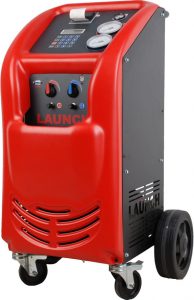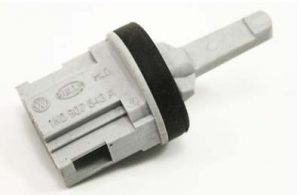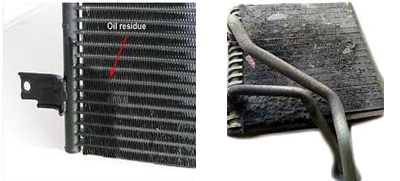Volkswagen are leaders in heating and cooling comfort and have adopted most if not all of the latest mobile A/C technology into their range of vehicles. All of their cars built after about 1990 come standard with variable A/C compressors that are used to maintain a constant cabin temperature and improve drive-ability and fuel economy. Although the VW range of vehicles excel in passenger comfort, their systems, like all cars will wear over time and do occasionally suffer a fault that ultimately removes the comfort from your cabin. This page written by Ben Perry from Mr Cool Automotive provides a great insight into the process of diagnosing, repairing or servicing your VW’s A/C system.
As a driver you might have noticed your air conditioners cooling ability slowly fade away, suddenly stop or intermittently play up. Explaining each of these conditions to us will guide our diagnostic process, however there are many different components that can cause the same condition to occur so in any case at least 30 minutes and up to an hour is required to check over the system and find the cause of your discomfort.
Step 1 | Checking the Gas Charge:

To check your gas charge we use refrigerant gases and a specially designed recovery machine to weigh the gas out of your system. This process gives us a “to the gram” accuracy and allows us to identify if your car has lost any of its refrigerant.
The A/C system is a completely sealed system and does not use the gas like a fuel but rather pumps it around the system transferring the heat from your cabin back into the outside air. So if your car is not performing due to a low gas charge, there must be a leak and it must be identified and repaired before the correct charge is placed back into the system.
Step 1b | Finding the Leak:
In the case that we have identified a low gas charge to be causing your A/C to under perform, we then have to find the leak. This is an easy task if your system has been introduced with a dye additive that shows up under UV light. We simply inspect all the lines and components with a UV torch until we find the dye stain.
If your vehicle does not have a UV dye added to the system a simple visual inspection for an oil stain, road damage or corrosion is carried out. Depending on the location of the leak a repair can vary from changing a small o-ring to replacing a major component.
Step 2 | Checking the Compressor operation:
The A/C compressor is the most critical component and is tasked with the job of pumping refrigerant around the system. Early versions of A/C compressors maintained cabin temperature by using a electromagnetic clutch to cycle the compressor in and out. VW however has adopted the technology of fixed clutch electronically varied compressors to better maintain cabin comfort and improve fuel economy. These improvements have however increased the need for training in the repair of these advanced systems, training that all Mr Cool Technicians have received.
After checking the gas charge in your VW we run the air conditioning and test the pumping condition of the compressor by observing the refrigerant gages that are connected to the service ports in the A/C system. If the compressor is not pumping efficiently we separate its operation from the car system and control it with a specialty tool known as an ECV control unit. Testing the compressor with this specialty tool allows us to determine if the compressor is faulty and needs replacing.
Over the years MrCool Automotive has repaired the air conditioning on more than 420 VW Golfs alone and over 75% of these cars have under performed due to a fault at the A/C compressor.
Step 3 | Testing Electrical Sensors and Drive Units:

Step 4 | The Repair:
Mr Cool Automotive’s sister company, CoolCompressors (http://www.coolcompressors.com.au), is an automotive air conditioning parts supply company that distributes all over Australia. This means we have brand new genuine and aftermarket VW components ready to fit to your car, allowing us to complete more than 99% of all repairs in the same day! To book your car in for a free diagnosis and quote simply call the number at the top of the page or submit an email inquiry.


